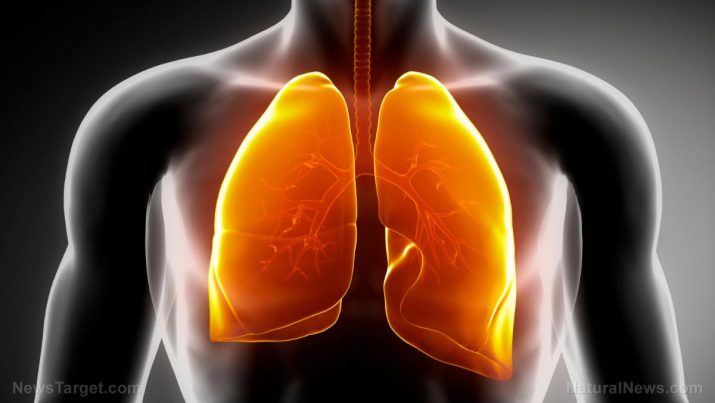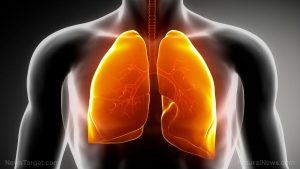
Biaxin – uses, health risks, and side effects at NaturalPedia.com
Wednesday, August 15, 2018 by Michelle Simmons
http://www.naturalpedia.com/biaxin-uses-health-risks-and-side-effects-at-naturalpedia-com.html

Biaxin is the brand name for the generically known drug called clarithromycin. This drug is a macrolide antibiotic that works by fighting bacteria in the body. It is typically prescribed to treat different types of bacterial infections that affect the skin and the respiratory system. In particular, it is used to treat bacterial infections like pneumonia (a lung infection), bronchitis (infection of the tubes leading to the lungs), and infections of the ears, sinuses, skin, and throat. Biaxin is also used to treat and prevent disseminated Mycobacterium avium complex (MAC) infection, which is a type of lung infection that often affects people with human immunodeficiency virus (HIV). Biaxin is also used in combination with other medicines for the treatment of stomach ulcers caused by the bacteria known as Helicobacter pylori.
Biaxin is also used sometimes to treat other types of infections, such as Lyme disease (an infection that may develop after a person is bitten by a tick), cryptosporidiosis (an infection that causes diarrhea), cat scratch disease (an infection that may develop after a person is bitten or scratched by a cat), Legionnaires’ disease, (type of lung infection), and pertussis (whooping cough; a serious infection that can cause severe coughing). In some cases, it is also used to prevent heart infection in patients having dental or other procedures.
However, Biaxin will not work for colds, flu, or other viral infections. In addition, taking antibiotics when they are not necessary increases a person’s risk of getting an infection later that resists antibiotic treatment.

Known side effects of Biaxin
The known side effects of Biaxin include the following:
- An abnormal taste in your mouth
- Diarrhea
- Nausea
- Stomach pain
- Vomiting
Biaxin can also cause serious side effects. Biaxin’s serious side effects and their symptoms can include the following:
- Liver problems, with symptoms such as weakness, loss of appetite, upper stomach pain, dark-colored urine, and yellowing of the skin or the whites of the eyes.
- Heart rate problems, with symptoms including fast or chaotic heartbeats.
- Allergic or hypersensitivity reactions, with symptoms such as painful rash, red or purple spots on the skin , or blisters; trouble breathing; or swelling of the face, lips, tongue, or throat.
Body systems that may be harmed by Biaxin
The body systems that may be harmed by Biaxin include the digestive, respiratory, integumentary, and the cardiovascular systems.
Food items or nutrients that may prevent Biaxin’s side effects
The food items that may prevent the side effects of Biaxin, particularly liver problems, include coffee, tea, grapefruit, berries like blueberries and cranberries, grapes, prickly pear, beetroot juice, fatty fish, olive oil, and cruciferous vegetables like Brussels sprouts, broccoli, and mustard greens.
Treatments, management plans for Biaxin’s side effects
Natural treatments for the side effects of Biaxin, particularly stomach pain, include consuming carrot and mint juice, rice tea, apple cider vinegar, eating yogurt, fennel, caraway seeds, cherries, raisins, apricots, and prunes, and using a heating pad.
Where to learn more
- Antibiotic drug sends cop into delusional episode of ‘antibiomania,’ prompting him to stab ‘demon’ firefighters
- Acute Pharmaceutical Toxicity killed Brittany Murphy – Could it be killing millions more?
- How to Prevent and Treat Cancer with Natural Medicine
- Sudden heart failure deaths tied to commonly prescribed antibiotic
- Gut microbiome found to be permanently distorted by H. pylori bacteria
Summary
Biaxin is the brand name for the generically known drug called clarithromycin.
Biaxin is a macrolide antibiotic that works by fighting bacteria in the body.
Biaxin is typically prescribed to treat different types of bacterial infections that affect the skin and the respiratory system.
Biaxin’s common side effects include an abnormal taste in your mouth, diarrhea, nausea, stomach pain, and vomiting.
Biaxin’s severe side effects include liver problems, heart rate problems, and allergic or hypersensitivity reactions.
Sources include:
Tagged Under: Tags: Biaxin





